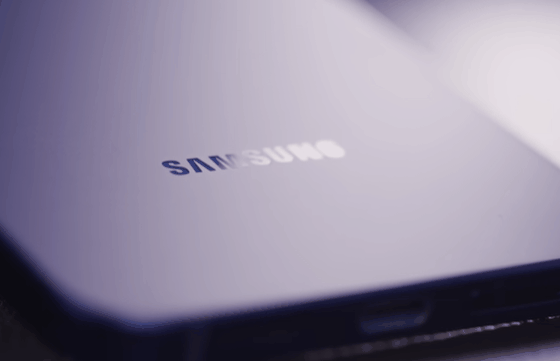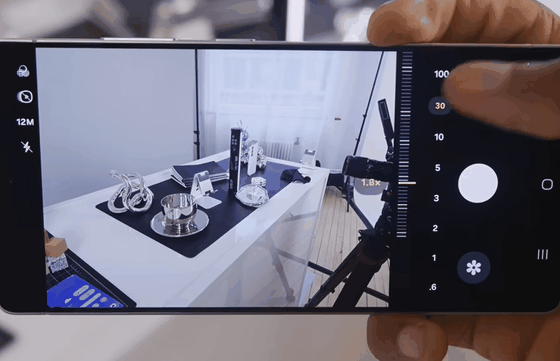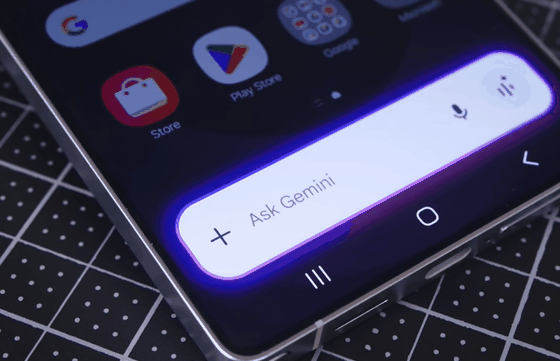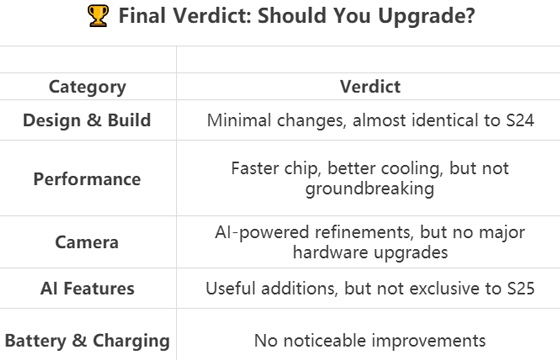Samsung Galaxy S25 Series: Major Evolution or Just an Incremental Upgrade?
Every year, smartphone enthusiasts eagerly anticipate the latest models, hoping for groundbreaking innovations. This year, Samsung has unveiled the Galaxy S25 Series, which includes the S25, S25+, and S25 Ultra. But the question lingers: Is this a true evolution, or just another incremental update? Let’s delve into the details of the S25 Series to determine whether the upgrades justify a new purchase.

Design & Build: Subtle Refinements
At first glance, the S25 Series looks strikingly similar to its predecessor, the S24. The design changes are minimal, with the following aspects remaining largely unchanged:
- Display Sizes: 6.2" (S25), 6.7" (S25+), and 6.8" (Ultra)
- Flat Edges & Button Placements: Consistent with previous models
- Battery Sizes: No changes across the lineup
The Ultra model does feature a slightly more rectangular frame, thinner bezels, and larger camera rings, but these tweaks are so subtle that they might go unnoticed unless you’re scrutinizing the device closely.
Design Verdict: Minimal changes
If you’re currently using an S24, upgrading to the S25 might not feel like a significant leap in terms of design.
- Hardware: Performance Enhancements, but No Game-Changers
Samsung has made some hardware improvements, but they don’t represent a revolutionary upgrade. Here’s what’s new under the hood:
- Snapdragon 8 Elite for Galaxy: A custom version of the Snapdragon 8 Gen 3, designed for faster and more efficient performance.
- Larger Vapor Chamber: The Ultra model now features a 40% larger vapor chamber for improved cooling.
- 12GB RAM as Standard: Even the base models come with 12GB of RAM, a notable upgrade for performance.
On the camera front, the Ultra model introduces a new 50MP ultra-wide camera, replacing the previous 12MP sensor. However, the main and telephoto lenses remain unchanged.
Hardware Verdict:
While the new chipset and enhanced cooling are welcome additions, the lack of significant camera hardware upgrades means the performance improvements feel more incremental than revolutionary.

Camera & AI Features: Software-Driven Enhancements
Rather than focusing on new hardware, Samsung has prioritized AI-driven software improvements to enhance its camera capabilities. Some notable updates include:
- AI-Powered Zoom & Image Processing: Enhanced zoom and image clarity, powered by AI.
- Improved Skin Tone Rendering: More natural and accurate skin tones in photos.
- Refined Night Mode: Improved low-light photography, though still trailing behind the iPhone.
Despite these AI advancements, the S25’s camera hardware remains largely unchanged. While the AI tweaks do offer noticeable improvements in photo quality, they don’t represent a massive leap forward compared to the S24.
Camera Verdict:
The camera upgrades are primarily software-based, with no major hardware changes. For some users, this might not be enough to justify an upgrade.

AI Features: Samsung’s Focus on AI
Samsung is clearly emphasizing AI-driven software enhancements, introducing several new features that leverage cutting-edge technology:
- AI Assistant ("Ask Gemini"): A hybrid assistant combining Google’s Gemini AI and Samsung’s Bixby, capable of controlling phone settings, adding calendar events, and summarizing text. However, it lacks voice activation—users must hold the power button to trigger it.
- AI Select: This feature enables context-aware content selection for text, images, and videos. It can summarize articles, extract GIFs from videos, and auto-enhance images.
- Natural Language Search: A smarter search function that allows users to search in a natural, conversational way. For example, you can search for a “sunset beach photo” instead of scrolling through albums.
- Audio Eraser: Removes unwanted background noise from videos (such as crowds or wind), offering a similar experience to Google’s Pixel feature.
While these features are impressive, most of them are software-based and will likely be available for older Samsung phones in future updates, making them less of a unique selling point for the S25.
AI Verdict:
Smart and practical features, but not a compelling reason to upgrade unless you’re eager to experience them first.
Battery & Charging: No Major Improvements
While the S25 boasts a more power-efficient chipset, the battery sizes remain unchanged across all models, and charging speeds stay the same. Samsung’s decision to keep the battery specs the same likely means battery life will improve marginally, but no drastic changes are expected.
Battery Verdict:
The new chip might offer slightly better battery efficiency, but the lack of significant changes in battery and charging specs means no major breakthroughs in this area.

Final Score: 6/10
The Samsung Galaxy S25 Series feels more like an incremental step than a true generational leap. If you’re currently using an S24, you may not feel the need to upgrade. However, if you’re holding onto an older device (S22 or earlier), the S25 offers enough improvements to warrant the jump.
Consider Upgrading If:
You own an older Samsung model (S22 or earlier)
You want AI-powered features ahead of software updates for older models
You prioritize enhanced zoom and ultra-wide photo quality
Skip the Upgrade If:
You already have an S24—there’s nothing revolutionary here
You were hoping for major hardware upgrades
You were expecting significant battery or charging enhancements
Looking Ahead:
Samsung seems to be playing it safe, focusing more on software improvements rather than radical hardware upgrades. If you’re hoping for something truly groundbreaking, you might want to wait for the Galaxy S26.
Will you be upgrading to the S25 Ultra, or does this year’s release feel like a safe bet rather than a bold innovation? Let us know your thoughts! 💭📱
RELATED: Camera Showdown: Samsung S25 Ultra vs iPhone 16 Pro Max - Which Is Better?





